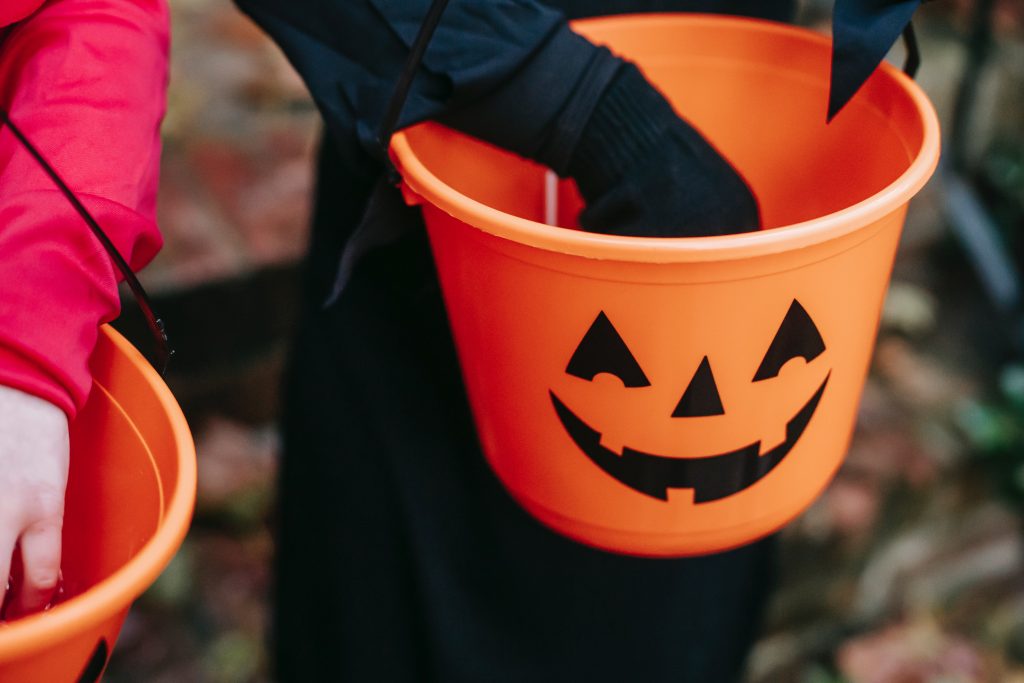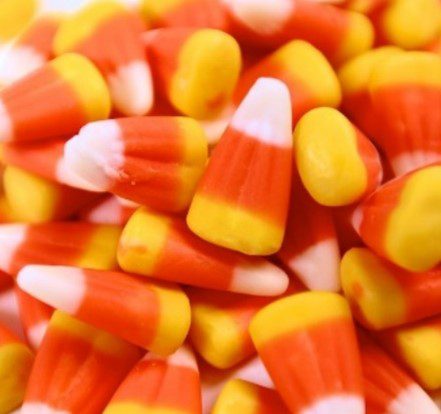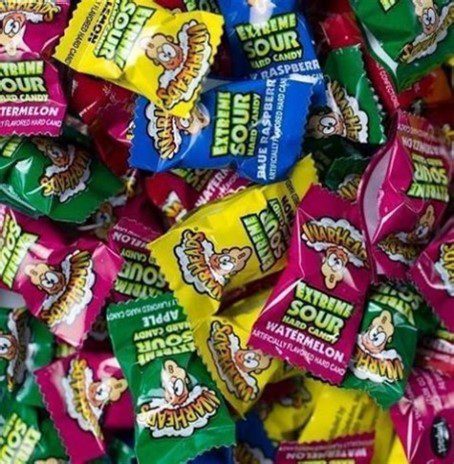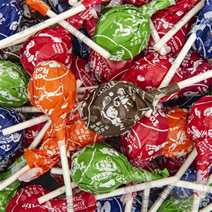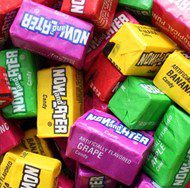The Sweet Stuff: If the NEE Teaching Indicators Were Halloween Candy
The costumes came and went, but my Halloween memories from childhood have one steadfast element: the trusty orange jack-o-lantern bucket.
That bucket got heavier and heavier through the evening as I plundered candy around the neighborhood. After the bucket couldn’t handle anymore, I ran back into my house and dumped out all the candy to begin sorting the loot into different piles of all my favorites: Laffy Taffy, Reese’s Cups, Snickers, Jolly Ranchers, Butterfingers, and those orange-and-black-wrapped peanut butter kisses.
What might these Halloween candies have in common with indicators of effective teaching practice?
Those candy piles remind me of the importance of individualizing data to get the clearest possible picture of what’s going on. As a kid, a full bucket made me feel overwhelmed; it was too much goodness to take in at once! I couldn’t choose what to focus on or decide what treat to try next.
In evaluations, if we are looking at the whole classroom and trying to observe everything, it becomes just as hard to focus and determine the feedback that will strengthen the classroom environment. That’s why the Network for Educator Effectiveness recommends focusing on only 3-5 indicators of effective teaching practice during classroom observations. Like sorting candy into piles, focusing on only 3-5 indicators allows us to get a clearer picture of what’s happening so we can prioritize and plan for improved feedback and school improvement.
With that in mind, let’s tie it all together. Let’s turn eight NEE indicators into some of those memorable Halloween candies. Consider this sweet new way of thinking of the NEE indicators as you hand out Halloween loot to the kiddos in your life this year.
1.1: Candy Corn
NEE Indicator 1.1: The teacher demonstrates content knowledge through the use of academic and disciplinary language and facilitates students’ accurate use of academic and disciplinary language.
Candy corn is classic Halloween with its three festive tiers – orange, yellow and white. Like candy corn, there are also three tiers to academic language.
The first tier is language that we all need to communicate in everyday events and actions.
The second tier is language that is used in general instruction. These are content-general high-frequency words that are used to help describe activities, responsibilities, and assignments within a class or across a school.
The third tier of academic language is the content-specific words that are required for students to be able to complete specific learning objectives.
Each tier works for its own purposes, and when combined, they give you the full candy-corn experience.
1.2: Fruit snacks
NEE Indicator 1.2: The teacher cognitively engages students in the content.
What better says cognitive engagement than a package of fruit snacks? Each bag is full of different shapes, colors, and flavors – a true variety indeed!
And just like fruit snacks, variety abounds in terms of cognitive engagement strategies. Cognitive engagement can occur in so many ways, and it can add many flavors to learning. There is a multitude of strategies, and we each have our favorites that we always look forward to using.
4.1: Warheads
NEE Indicator 4.1: The teacher uses instructional strategies that lead students to problem-solving and critical thinking.
The sourest of candies, Warheads can’t be eaten willy-nilly. There must be a plan in place – and a commitment to carry out that plan. The preparation is hard, and then starting in on the process of eating one can cause some conflict and doubt: Why am I doing this? But the payoff is worth it.
Through the sour, the possible tears, and nasty faces comes a sweet reward at the end – a reward that is sweetened more by a commitment to the plan and the wherewithal to stay true.
So much of that describes great planning around critical thinking and problem-solving. We have to push the boundaries for ourselves as teachers if we want to push the learning and thinking of students. It sometimes creates doubt, it sometimes leaves us feeling a little sour, and maybe even looking for a simpler way. But when done correctly, the payoff of deeper learning is well worth it.
5.1: Tootsie Pop
NEE Indicator 5.1: The teacher uses motivation strategies that affectively engage students.
Tootsie pops – another classic. A hard, sweet exterior that takes time and patience to uncover the sweet chocolatiness of a tootsie roll inside. The things that really stick out about Tootsie Pops, though, are the advertising slogans and urban myths that went viral long before we even knew going viral was a thing! “How many licks does it take?” And then there was the arrow and star meaning you won a free Tootsie Pop. Both were such great hooks. One got you interested in trying to count how long it took to get through a pop, and the other had you going back for more.
Just like those examples, clever hooks and strategies to get students interested in taking part in the classroom are the core components of Indicator 5.1, motivational and affective engagement. Strategies vary, and students can become interested in participating in the classroom from many of the strategies, but finding the right ones will have long-lasting effects on their motivation and attention levels.
5.3: Now and Later
NEE Indicator 5.3: The teacher uses strategies that promote kindness and social competence among students in the classroom community.
The Now and Later came with five individually wrapped candies in one package. They were the ideal choice for eating some now and leaving some for a later time, hence the name.
Like the Now and Later, one indicator can be enjoyed in the classroom now and have an impact later. That indicator is 5.3: The teacher uses strategies that promote social competence in the classroom, school, and community and between students.
5.3 is about the teacher helping students be kind to each other and setting up opportunities that promote positive interactions among peers. It also carries beyond the classroom by instilling prosocial values that will continue through school and throughout life. It is an indicator that can truly be enjoyed Now and Later.
5.3b: Smarties
NEE Indicator 5.3b: The teacher establishes secure teacher-student relationships.
Ubiquitous and all over the Halloween bucket were those wrapped packets of Smarties. They were constant and ever-present, filling up a large amount of the Halloween stash. In much the same way, student-teacher relationships and seeking to strengthen those relationships should be ubiquitous in the classroom.
NEE’s research suggests that the student-teacher relationship strongly impacts students’ perceptions of both cognitive engagement and monitoring of the effects of instruction. While all indicators are important, the one that should be most prevalent and most widely available inside of a classroom could very well be the most important.
7.4: Skittles
NEE Indicator 7.4: The teacher monitors the effect of instruction on the whole class and individual learning.
The little fun-size bags of Skittles provided just enough variety that shoveling all the skittles into your mouth at once could end up tasting horrible. The best play was to sort out the skittles, flavor by flavor and color by color, stacking them or sorting them into like groupings. From there, the experience is much richer – orange when you want orange, lemon when you’re ready for lemon, and for me, always saving grape for last.
Enjoying Skittles to the max meant relying on data to make decisions and to set up the best possible experience, which connects with NEE Indicator 7.4: monitoring the effect of instruction. To be able to monitor, one must collect data and use that data to adjust their teaching to ensure students are learning. Monitoring the effect of our teaching allows us to take corrective action for the whole class, small groups, or individuals. It also allows us to differentiate the classroom experience for students, giving them the scaffolding and support that keeps them in the learning zone.
Final Thoughts: Variety
Preparing for this blog, the NEE team brainstormed ideas for which Halloween treats best connected with our most used indicators of effective teaching practices. As we did that, a trend became interesting, and you may have noticed as well: For all those Halloween treats and candies we mentioned, chocolate is almost completely left out (except for the inside of a Tootsie Pop).
We always came back to candies that offered a variety of flavors. Much like those candies, effective teaching needs a variety of strategies, practices, and skills. Even within each teaching practice, there are multiple ways to be successful.
As the bucket may be filled with different indicators of effective teaching practice, each indicator also has unique flavors, colors, and textures. Each provides its own experience and enjoyment levels. Sure, we can each have our favorite flavors of candy and those Halloween treats we enjoy the most, but sometimes trying something new and different can bring just as much enjoyment – or even lead to a new favorite.
As you look at your own Halloween loot and consider your bucket of teaching strategies, think about your favorites, why you enjoy them, and how the variety inside that bucket brings the real joy and fun.
Tom Hairston is the Managing Director of the Network for Educator Effectiveness. Tom has worked with NEE since 2011. Prior to his work with NEE, he worked for two years as a Positive Behavioral Interventions & Supports Consultant for the Heart of Missouri Regional Professional Development Center at the University of Missouri. He began his career in education as a high school special education and language arts teacher and football coach at Moberly High School in Moberly, Mo. Tom received his PhD in Educational Leadership and Policy Analysis from the University of Missouri in 2012.
The Network for Educator Effectiveness (NEE) is a simple yet powerful comprehensive system for educator evaluation that helps educators grow, students learn, and schools improve. Developed by preK-12 practitioners and experts at the University of Missouri, NEE brings together classroom observation, student feedback, teacher curriculum planning, and professional development as measures of effectiveness in a secure online portal designed to promote educator growth and development.

